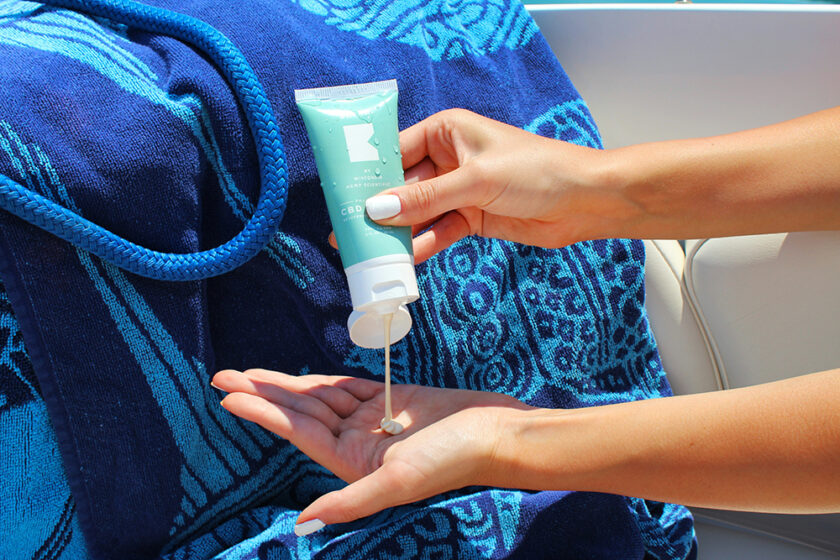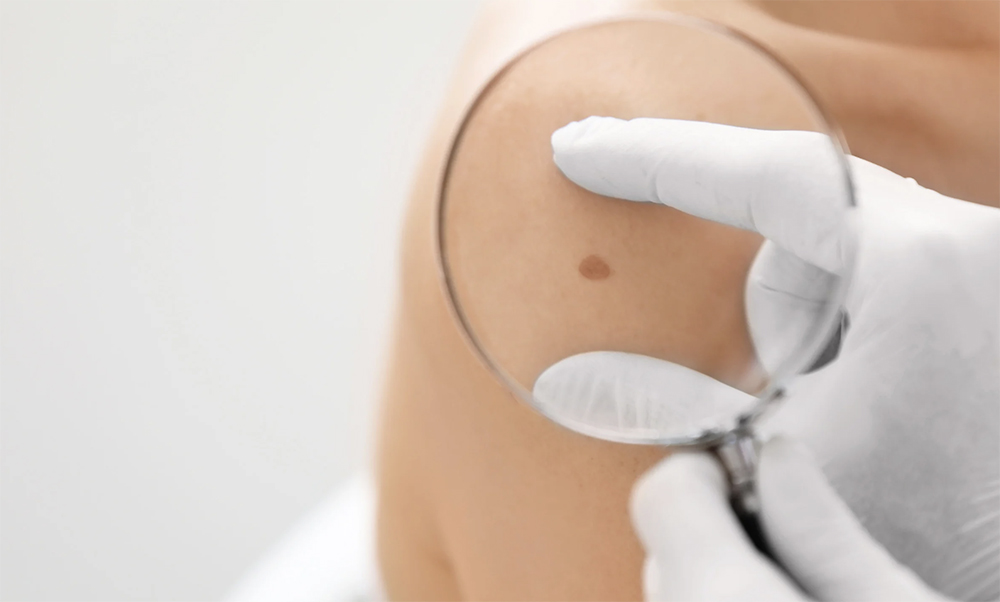Make sun safety part of your
summer routine
After a long, cold winter, it is finally here. Memorial Day weekend signals more than just the unofficial start of summer at the shore, it marks a return to everything we enjoy about this time of year.
The beach chairs come out, the boardwalk fills up and we finally feel the warmth of the sun that we’ve been craving since January. As someone who loves this season as much as anyone, I also want to share a timely reminder: May is Skin Cancer Awareness Month. That may not be as fun to talk about as our holiday cookout or a new restaurant in town, but it’s worth our attention, especially in sun-loving communities like ours.
Skin cancer is the most common form of cancer in the U.S., with millions of cases diagnosed each year, and the numbers are rising. Yet, here’s the good news: it’s also one of the most preventable forms of cancer.
As days grow longer and we spend more time outdoors, now is the ideal time to think about how we can protect ourselves. The American Academy of Dermatology has launched a month-long campaign to raise awareness about early detection, prevention strategies and the importance of regular skin checks. Here at the shore, where UV exposure is practically a lifestyle, it’s a message we can’t afford to ignore.

The AAD’s message for Skin Cancer Awareness Month focuses on the following key points:
Prevalence of skin cancer: Skin cancer is the most common cancer in the United States.
Importance of early detection: Early detection significantly increases the chances of successful treatment.
Sun protection measures: The AAD recommends seeking shade, wearing protective clothing and applying a broad-spectrum, water-resistant sunscreen with an SPF of 30 or higher.
Regular skin examinations: Conducting regular self-examinations and scheduling professional skin exams can aid in early detection.
There are three major types of skin cancer: basal cell carcinoma, squamous cell carcinoma and melanoma.
Basal and squamous cell cancers are the most common and usually appear on sun-exposed areas of the body like the face, ears, neck and hands.
Melanoma is less common, but much more aggressive and can spread quickly if not caught early. Fair skin, a history of sunburns, excessive UV exposure, including tanning beds, and a family history of skin cancer all increase your risk. But anyone, regardless of skin tone, can develop skin cancer.
The ABCDE rule is a helpful guide for identifying moles or spots on the skin that could be signs of skin cancer. Be aware that potentially harmful moles or spots on your skin may be in areas that never see the sun. Here’s what each letter stands for:
A – Asymmetry: One half of the mole doesn’t match the other in shape, color, or size.
B – Border: The edges are irregular, ragged, notched, or blurred.
C – Color: The color isn’t uniform and may include different shades of brown, black, pink, red, white, or even blue.
D – Diameter: The mole is larger than 6 millimeters across (about the size of a pencil eraser), although melanomas can be smaller.
E – Evolving: The mole is changing in size, shape, color, or texture, or it starts to itch, bleed, or crust.
If you notice any of these warning signs, it’s a good idea to see a dermatologist. Early detection is key to treating skin cancer, especially melanoma, successfully.
Recent studies offer hope in the fight against melanoma and other skin cancers. Researchers are exploring improved diagnostic tools, including AI-powered imaging, that can help dermatologists identify suspicious lesions with greater accuracy. There’s also growing evidence that daily sunscreen use, even on cloudy days, significantly reduces the risk of skin cancer over time.
In another promising development, scientists are studying personalized skin cancer risk assessments based on genetic markers and skin type, a tool that could help tailor prevention strategies to individual patients.
Most skin cancers are highly treatable if caught early. This includes melanoma, which is the deadliest form of skin cancer. That’s why dermatologists emphasize the importance of checking your skin regularly, using sunscreen daily and seeing a dermatologist at least once a year.
Choosing the right sunscreen
Of course, not all sunscreens are created equal. Dermatologists recommend looking for broad-spectrum formulas (that protect against both UVA and UVB rays), with an SPF of 30 or higher and water resistance, especially important on beach or pool days. Mineral sunscreens, made with zinc oxide or titanium dioxide, are great for sensitive skin, while chemical sunscreens tend to apply more smoothly.
Apply sunscreen at least 15 minutes before going outside and reapply every two hours – more often if you’re swimming or sweating. Remember the phrase I have coined, “Redo in two,” so you don’t forget to reapply it. Be sure to cover the commonly missed spots: your ears, the back of your neck and the tops of your feet. I often wear a wide-brimmed visor, so I use sunscreen designed specifically for the scalp to protect the part in my hair.
Living by the ocean means we are also dealing with reflected UV rays from the water and sand, which can intensify sun exposure. So, on long beach days, it helps to bring a tent or umbrella, wear a wide-brimmed hat and UV-blocking sunglasses, and choose lightweight, long-sleeved shirts when you can.
Staying hydrated is another easy way to keep your skin healthy. If possible, reduce time in the sun between 10 a.m. and 2 p.m. when the rays are the strongest. Teach your kids sun protection habits early and model them yourself. Make sun protection part of the beach day routine, just like packing snacks and towels.
This summer let’s all commit to looking out for ourselves and each other. Whether it’s encouraging a friend to book a skin check, or making sure your kids know the importance of sun safety, a small step now can make a big difference later.
So, as we get ready for cookouts, boardwalk strolls and endless afternoons in the surf, let’s also make space in our beach bags for sunscreen, a good hat and maybe even a little extra shade.
See you on the beach. I’ll be the one under the umbrella, with the big visor and SPF 30.
Robin is a former television reporter for NBC News 40. She currently hosts a podcast and radio program called Living Well with Robin Stoloff. It airs Sundays at 10 AM on Lite 96.9. You can email Robin at livingwellwithrobin@gmail.com















